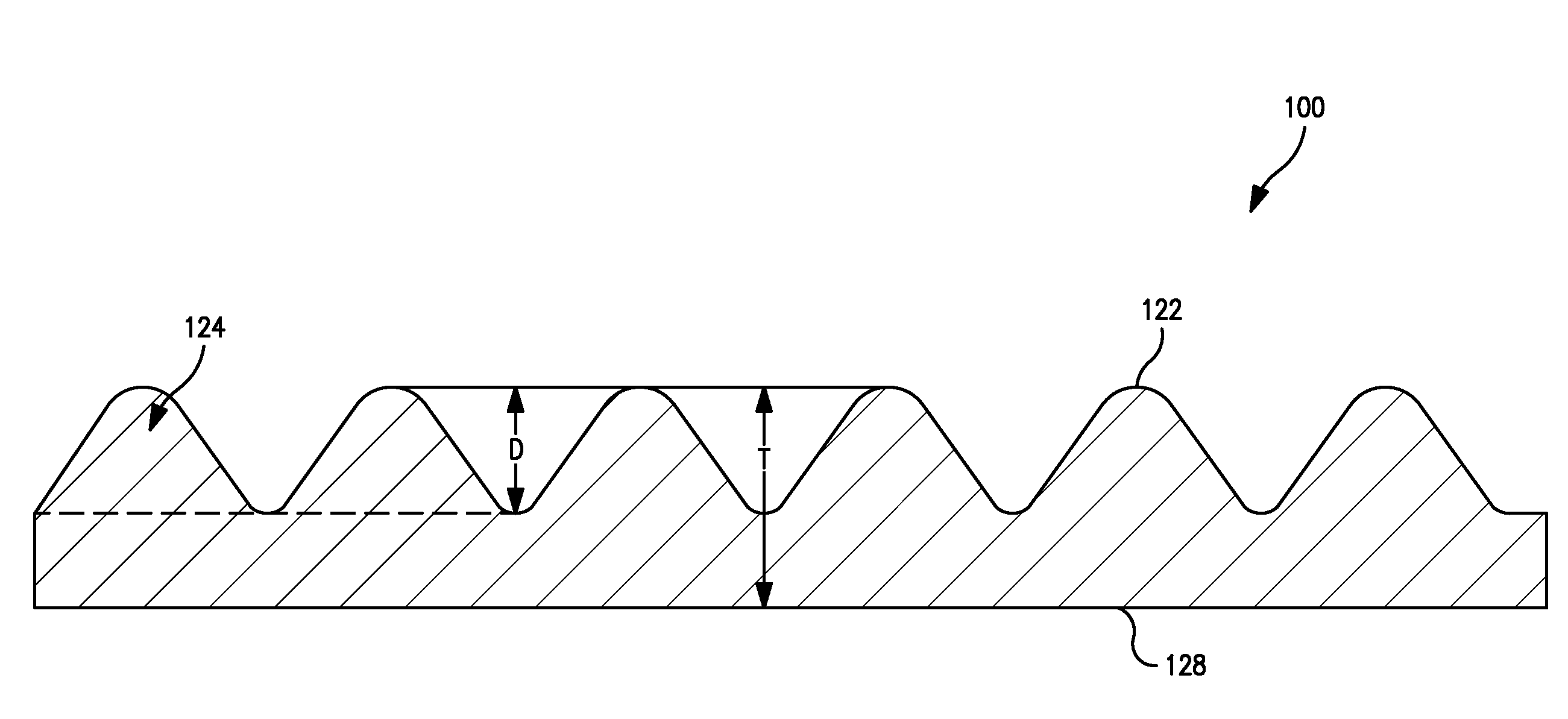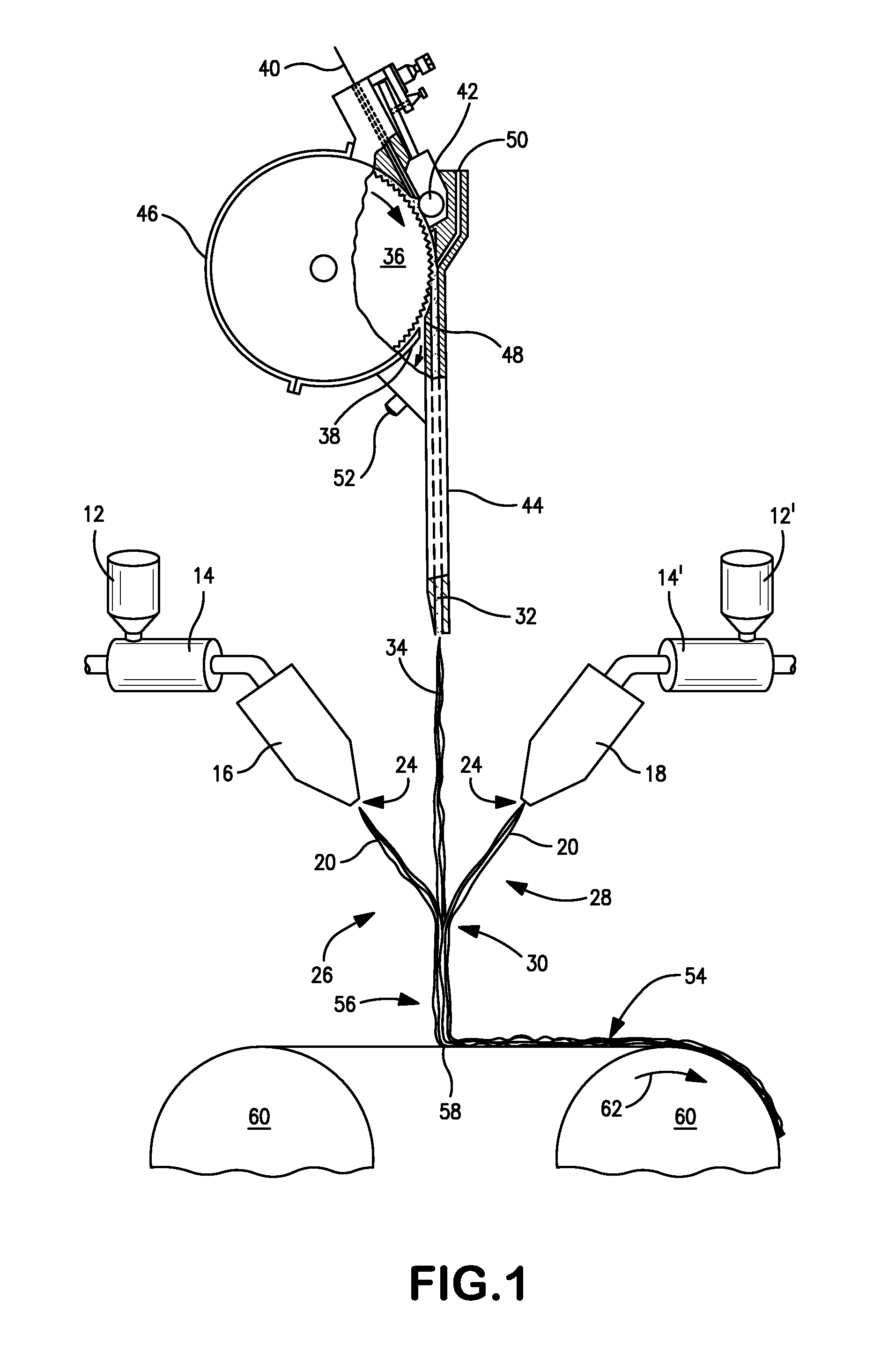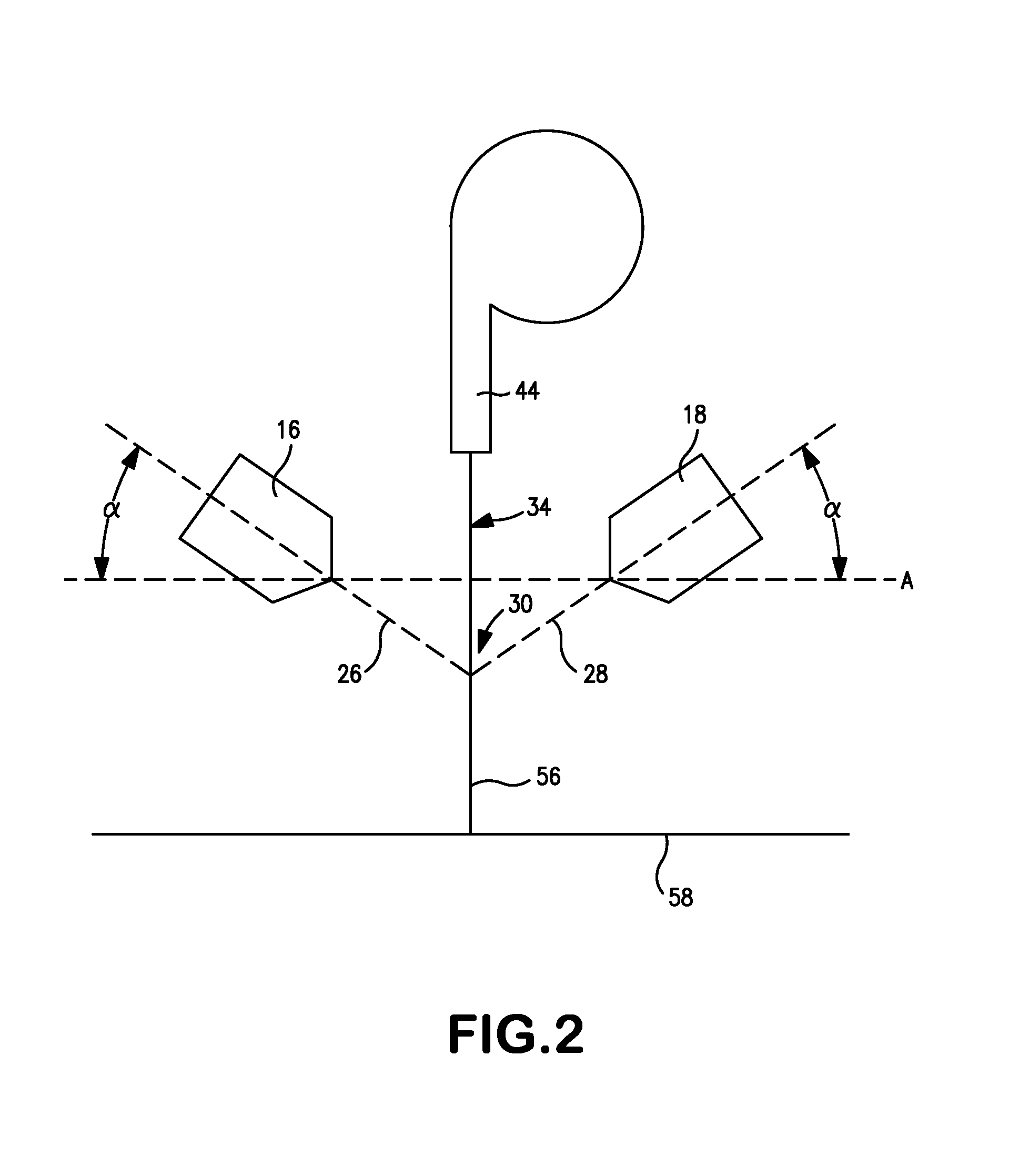Coform Nonwoven Web Formed from Propylene/Alpha-Olefin Meltblown Fibers
a technology of propylene and alpha-olefin, which is applied in the field of coform nonwoven webs formed from propylene/alpha-olefin meltblown fibers, can solve the problems of inability to form a textured surface, adverse effect of coform web resulting absorbency, and inability to readily bond polypropylene meltblown fibers to absorbent materials
- Summary
- Abstract
- Description
- Claims
- Application Information
AI Technical Summary
Benefits of technology
Problems solved by technology
Method used
Image
Examples
example 1
[0052]Various grades of polypropylene were tested for their half crystallization time (t1 / 2) at 125° C. and 130° C., crystallization temperature (Tc), and melting temperature (Tm) as described above. The results are shown below.
t1 / 2 [min]t1 / 2 [min]TcTmDesignation@ 125 C.@ 130 C.[° C.][° C.]Basell 44112.59.5111167Metocene MF650X25.017.0113156Borflow HL51231.34.0119160VM 7001-346.020.01111581Basell 441 is a propylene homopolymer having a density of 0.91 g / cm3 and melt flow rate of 440 g / 10 minute (230° C., 2.16 kg), which is available from Basell Polyolefins.2Metocene MF650X is a propylene homopolymer having a density of 0.91 g / cm3 and melt flow rate of 1200 g / 10 minute (230° C., 2.16 kg), which is available from Basell Polyolefins.3Borflow HL512 is a propylene homopolymer having a density of 0.91 g / cm3 and melt flow rate of 1200 g / 10 minute (230° C., 2.16 kg), which is available from Borealis A / S.4[VM 7001-3] is a propylene / ethylene copolymer having a density of 0.89 g / cm3 and a melt...
example 2
[0053]Various samples of coform webs were formed from two heated streams of meltblown fibers and a single stream of fiberized pulp fibers as described above and shown in FIG. 1. The meltblown fibers were formed from the polypropylene samples referenced in Example 1. The pulp fibers were fully treated southern softwood pulp obtained from the Weyerhaeuser Co. of Federal Way, Wash. under the designation “CF-405.”
[0054]The polypropylene of each stream was supplied to respective meltblown dies at a rate of 1.5 to 2.5 pounds of polymer per inch of die tip per hour to achieve a meltblown fiber content ranging from 25 wt. % to 40 wt. %. The distance from the impingement zone to the forming wire (i.e., the forming height) was approximately 8 inches and the distance between the tips of the meltblown dies was approximately 5 inches. The meltblown die positioned upstream from the pulp fiber stream was oriented at an angle of 50° relative to the pulp stream, while the other meltblown die (positi...
PUM
| Property | Measurement | Unit |
|---|---|---|
| density | aaaaa | aaaaa |
| density | aaaaa | aaaaa |
| wt. % | aaaaa | aaaaa |
Abstract
Description
Claims
Application Information
 Login to View More
Login to View More - R&D
- Intellectual Property
- Life Sciences
- Materials
- Tech Scout
- Unparalleled Data Quality
- Higher Quality Content
- 60% Fewer Hallucinations
Browse by: Latest US Patents, China's latest patents, Technical Efficacy Thesaurus, Application Domain, Technology Topic, Popular Technical Reports.
© 2025 PatSnap. All rights reserved.Legal|Privacy policy|Modern Slavery Act Transparency Statement|Sitemap|About US| Contact US: help@patsnap.com



